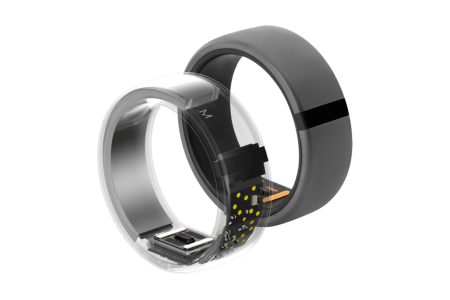Review: Motiv’s smart ring is a feat of miniature engineering

Financial Times By Tim Bradshaw
Often, a personal technology review has little to do with the tech itself. What makes a good product comes down to design or implementation, or simply whether a device does what it is intended to do.
It is all too rare that I come across something that seems to be a real engineering achievement. Motiv, a new fitness tracker, is just that: a real feat of miniaturisation.
Motiv is not another band or smartwatch, although it can track steps, heart rate and workouts like many of those devices. This tracker is worn not on the wrist, but the finger.
Motiv is not the first “smart ring” I have encountered — Oura and Ringly among them — but it is certainly the most accomplished. First and foremost, it is small and simple enough that at a glance, nobody would realise it contains technology at all. There is no blingy jewel in which to hide the battery or sensors — only a band, albeit one about twice as wide as wide as my wedding ring.
Yet the start-up behind the ring, also called Motiv, has managed to cram in the same kind of optical heart-rate monitor that is found in wrist-based fitness trackers (the flickering green light might be familiar to Fitbit users) and a battery that lasts for about three days.
Capillaries in the finger make it a good spot to measure heart rate, especially given a snug fit is required to wear the ring anyway. (To get the right fit, buyers are first sent a ring sizing kit through the post before receiving their device.)
Despite their size, Motiv’s sensors are sufficient to track how often you are getting up and about, and how well you sleep. Unlike most recent Fitbit bands and watches, Motiv does not monitor your heartbeat all the time — only every few minutes. Continuous tracking only kicks in when its motion sensor notices that you are active.
That helps to preserve the battery life but it does mean it is more suited to people looking for a nudge to move more, rather than precisely tracking intensive workouts.
There is no screen or vibrating motor on the ring, just a small LED that blinks when it is charging or syncing data via Bluetooth to a smartphone app. In these times of growing concern about smartphone addiction, this is one wearable that will not put another screen in your life.
Motiv’s mobile app (currently for iPhone only, with Android support coming in the next few months) makes clever use of notifications to get around the lack of a screen — for instance pinging you when it needs charging using its small magnetic charger. Motiv sends two chargers with every ring, one of which is ingeniously embedded in a key ring — without which the tiny USB device might be rather too easy to lose.
Like the ring, the app is clean, simple and minimalist, although that may mean it lacks the granular data and feedback that some might look for. Most prominently featured is the resting heart rate statistic. This is one of the best all-round indicators of heart health and is best measured just as you wake up.
The Motiv ring is ideal for people, like me, who really dislike wearing a wristband in bed. I found it was generally quite accurate at measuring sleep, although on one particularly restless night it failed to tell when I was lying there awake, listening to the party downstairs. This is a mistake most wearables seem to struggle with, though.
The San Francisco-based inventors of Motiv first had the idea for a smart ring more than five years ago. It was originally conceived as a messaging device but during the development process, it morphed into a fitness tracker.
Only in the past couple of years has the technology caught up with that vision, with the power requirements and components getting small enough.
The first year of the product’s development was spent almost entirely trying to figure out how to power the ring. So different were Motiv’s requirements to the majority of other device makers, the final product has a custom-made curved battery, which its creators insist will not overheat even if the device short circuits.
Motiv also had to make sure the ring was waterproof. During a few weeks of testing, mine withstood dunks in the washing up bowl, hot showers and regular hand washing.
To keep the product as small as possible while cramming in the required electronic components, the seal is less than a millimetre thick. “We were fighting over fractions of millimetres in this product,” Mike Strasser, co-founder, told me when we met last year, before the product had launched. “You can wear it and you wouldn’t know there was anything intelligent about it.”
For $199, Motiv may not be as sophisticated as the latest smartwatches, which boast GPS tracking and even standalone mobile phone connections.
Having solved so many engineering challenges required to cram all that technology into a ring, the question of whether to buy a Motiv ultimately comes back to design. Unlike a watch, which has long been associated with function as well as form, we see rings today as jewellery, so wearing one is usually an aesthetic choice.
I can see why that might put some people off this idea. But now that Motiv has shown what is possible, I do not expect rings to remain purely decorative for much longer.